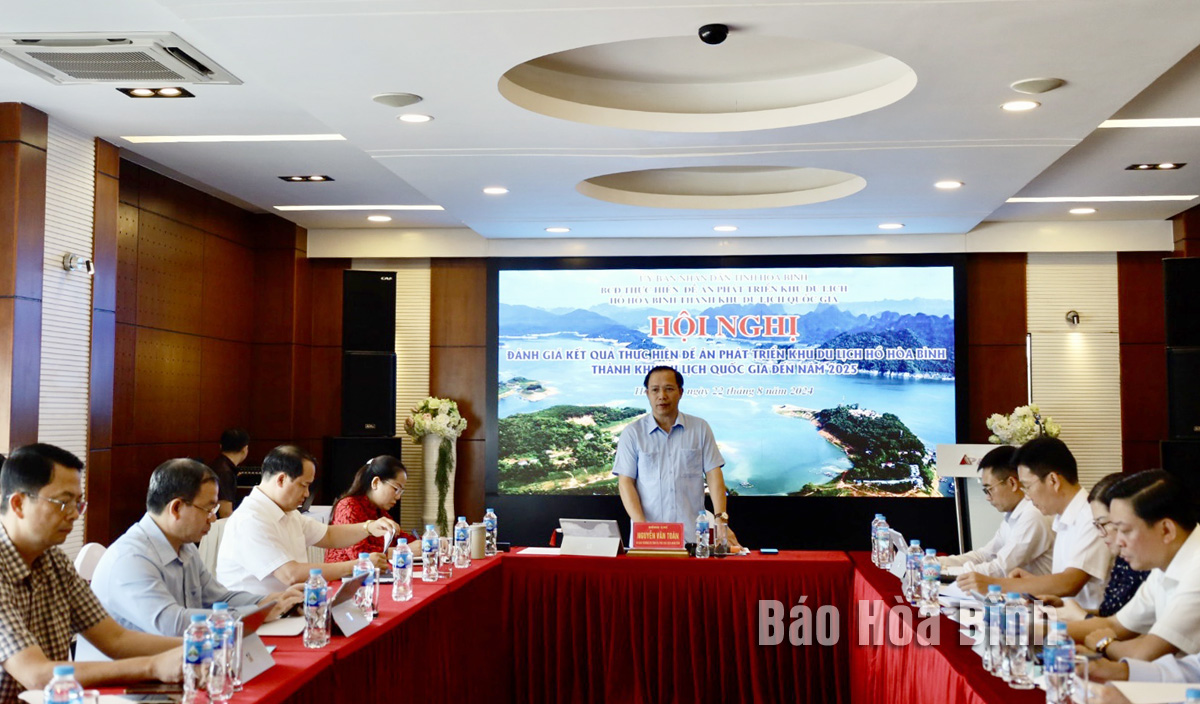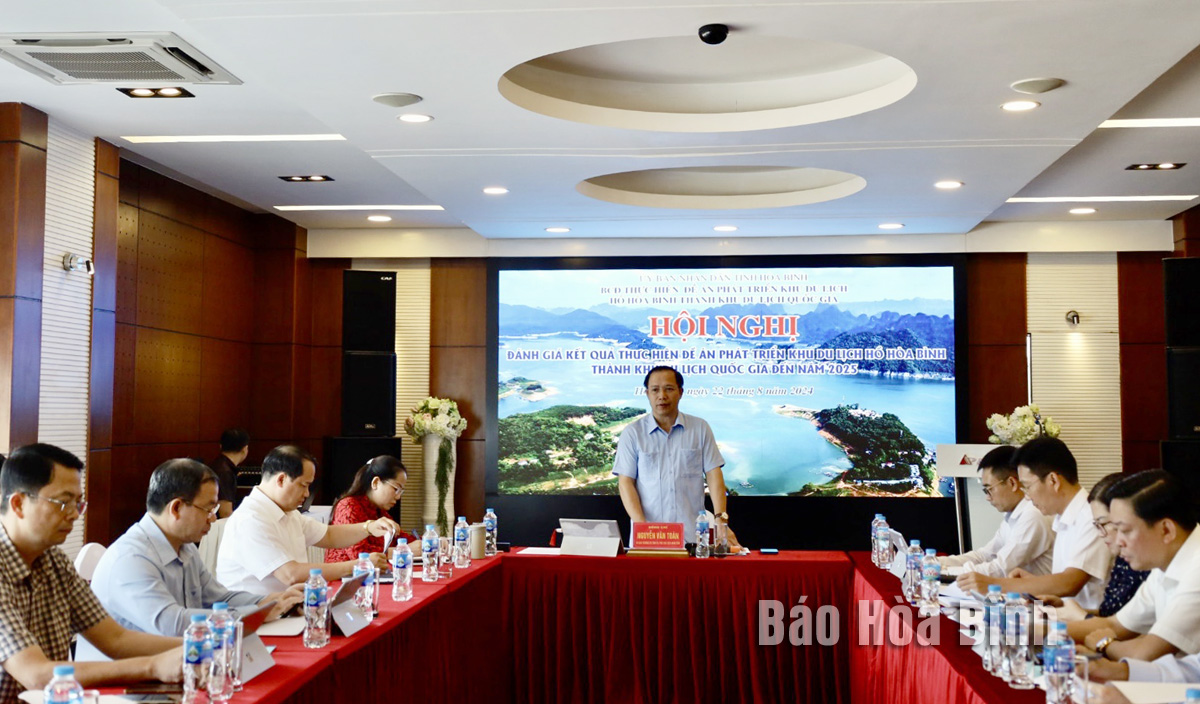
The People's Committee of Hoa Binh province hosted a conference on August 22 to evaluate the implementation of a project to develop Hoa Binh Lake tourist area into a national tourist area by 2025. Nguyen Van Toan, Permanent Vice Chairman of the provincial People's Committee and head of the steering committee for implementing the project, presided over the conference.
Nguyen Van Toan, Permanent Vice Chairman of the provincial People's Committee speaks at the conference.
In the first six months of the year, the number of visitors to the Hoa Binh Lake tourist area has shown stable growth, and brought socio-economic benefits, contributing to creating jobs and revenue for the local budget.
The tourist area welcomed 482,000 visitors, including 7,500 international holidaymakers, earning total revenue of 285 billion VND (11.45 million USD).
The steering committee has directed relevant agencies to effectively carry out their assigned tasks, including stepping up efforts to raise awareness of tourism development.
Special attention has been paid to investing and developing infrastructure and technical facilities serving tourism, diversifying tourism products, and training tourism human resources.
Efforts in advertising, promotion, and tourism development cooperation have been strengthened. The tourist area has so far met three out of the five criteria required to be recognised as a national tourist area.
Delegates discussed and clarified difficulties and obstacles facing the implementation of the project, while also making several proposals and recommendations.
Toan recommended that relevant departments and agencies should prioritise effective planning, develop plans, and create detailed master plans for tourism projects at the Hoa Binh Lake tourist area; review private investment projects and decisively revoke licences for those that are delayed or have no feasible implementation; strictly manage and invest in, upgrade ports; strengthen management, inspection and protection of tourism resources and the environment.
The People's Committees of districts were requested to enhance their roles in state management, tighten land and construction management related to the tourism sector. Meanwhile, information and communication agencies were demanded to enhance popularisation activities with many forms to promote the image of destinations, thus attracting tourists to the tourist area.
A diverse chain of eco-tourism and resort destinations concentrated in Hoa Binh city and the districts of Tan Lac, Da Bac, and Luong Son… Along with the launch of several key high-quality resort tourism projects, these developments have reshaped the landscape and enhanced the appeal of Hoa Binh as a travel destination.
Boasting diverse terrain, a mild climate, and rich natural resources, Cao Phong district is increasingly asserting its place on Vietnam’s tourism map, attracting both domestic and foreign visitors. The district is renowned for its stunning landscapes, majestic mountains, a crystal-clear hydropower lake, and the unique cultural identity of local ethnic groups.
With its pristine landscapes, unique cultural heritage of Muong ethnic minority, and an expanding range of visitor experiences, Tan Lac district of Hoa Binh has fast become a captivating destination for both domestic and international tourists.
Until now, Sung village in Cao Son commune, Da Bac district remains the only Dao ethnic community in Hoa Binh province to develop a community-based tourism model. Beyond its untouched natural landscapes, cultural identity serves as the cornerstone attraction for visitors.
Alongside the diverse cultural identities of the Kinh, Muong, Tay, Thai, Dao, and Mong ethnic people, Hoa Binh province is also renowned as the "capital" of the northwestern Vietnamese cuisine, offering unique and distinctive dishes. At festivals, during Lunar New Year (Tet), or on significant family or community occasions, special dishes are prepared, leaving a lasting impression on visitors.
A Phong Linh (Yellow Tabebuia) flower garden in Thang village, Thach Yen commune, Cao Phong district is currently in full bloom, drawing a large number of visitors.



